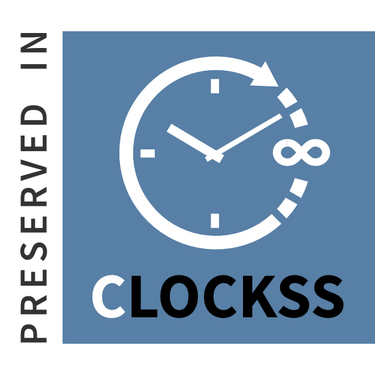Quotes from the scientific status of phonetic study
DOI:
https://doi.org/10.31973/26q2at76Keywords:
linguistic sounds , the scientific status of phonetic study, the applied study of language , the importance of phonetic study , soundAbstract
Since the Arabic language is a young language, and it has not had a stage in which it has aged, time has passed and it is still fresh and vibrant, and the subject of attention of students and researchers, old and modern, and at all its linguistic levels (phonetics, morphology, grammar, and semantics), meaning the study of phonetics, the first foundation in all languages; the first building block, including the foundation and beginning, the sounds of a specific language are met together to form verbal structures , as the structures that in their meeting on discovery achieve for us what is called (language), what are these sounds that languages depend on? And how can this scientific status be achieved to form a specialized study of it called phonetics? We find the answer to it between the folds of our research article.
Downloads
References
أبو عبدالله محمد بن عمر بن الحسن بن الحسين لبتيمي الرازي. (1420هـ). مفاتيح الغيب=التفسير الكبير (الإصدار 1، المجلد 3). بيروت: دار إحياء التراث العربي. صفحة 42.
أحمد ياسوف. (1999). جماليات المفردة القرآنية (المجلد 2). دمشق: دار المكتبي. صفحة 178.
أيوب بن موسى الحسيني القريمي الكفوي. (بلا تاريخ). الكليات معجم في المصطلحات والفروق اللغوية. (عدنان درويش- محمد المصري، المحرر) بيروت: مؤسسة الرسالة. صفحة 562.
تمام حسان. (بلا تاريخ). مناهج البحث في اللغة. مصر: مكتبة الأنجلو. صفحة 59.
جوزيف فندريس. (1950). اللغة. (عبد الحميد الدواخلي، محمد القصاص، المترجمون) مصر: مكتبة الأنجلو المصرية. الصفحات 83-86.
جون ليونز. (بلا تاريخ). اللغة وعلم اللغة (المجلد 1). بيروت: دار النهضة العربية. صفحة 88.
د.أحمد مختار عمر. (2003). البحث اللغوي عند العرب (المجلد 8). الأردن: عالم الكتب. صفحة 93.
د.صبحي إبراهيم الصالح. (1960). دراسات في فقه اللغة (المجلد 1). دار العلم للملايين. الصفحات 276-277.
رمضان عبدالتواب. (1985). المدخل إلى علم اللغة ومناهج البحث اللغوي (المجلد 2). القاهرة: مكتبة الخانجي. الصفحات 13-24.
طه عبدالفتاح مقلد. (بلا تاريخ). فن الألقاء. مكة المكرمة: مكتبة الفيصلية. الصفحات 29-50.
عبد السلام أحمد راغب. (2001). وظيفة الصورة الفنية في القرآن (المجلد 1). حلب: فصلت للدراسات والترجمة والنشر. الصفحات 381-384-385.
عبد الله بن أحمد الفاكهي النحوي المكي. (1993). شرح كتاب حدود النحو (المجلد 2). (د.المتولي رمضان أحمد الدميري، المحرر) القاهرة: مكتبة وهبة. صفحة 72.
عبيد الله بن سعيد السجزي الوائلي البكري. (2002). رسالة السجزي إلى أهل زبيد في الرد على من أنكر الحرف والصوت (المجلد 2). (محمد با كريم با عبدالله، المحرر) المدينة المنورة: عمادة البحث العلمي بالجامعة الإسلامية . صفحة 255.
فريال زكريا العبد. (بلا تاريخ). الميزان في أحكام التجويد. القاهرة: دار الإيمان. الصفحات 70-52.
كمال بشر. (بلا تاريخ). دراسات في علم اللغة. القاهرة: دار غريب للطباعة والنشر. الصفحات 194-195.
ماريو باي. (1998م). اسس علم اللغة (المجلد 8). (أحمد مختار عمر، المترجمون) الأردن: عالم الكتب. صفحة 63.
مجموعة من المؤلفين. (بلا تاريخ). مجلة جامعة أم القرى. 19، صفحة 245.
محمود السعران. (1997م). علم اللغة مقدمة للقارئ العربي (المجلد 2). القاهرة: دار الفكر العربي. الصفحات 85-75-86-87-93.
نصر الله بن محمد بن محمد بن عبدالكريم الشيباني الجزري. (1375هـ). الجامع الكبير في صناعة المنظوم من الكلام والمنثور. مطبعة المجمع العلمي. الصفحات 40-41.
Downloads
Published
Issue
Section
License
Copyright (c) 2025 Hind Saleh Hammoodi

This work is licensed under a Creative Commons Attribution 4.0 International License.
Copyright and Licensing:
For all articles published in Al-Adab journal, copyright is retained by the authors. Articles are licensed under an open access Creative Commons CC BY 4.0 license, meaning that anyone may download and read the paper for free. In addition, the article may be reused and quoted provided that the original published version is cited. These conditions allow for maximum use and exposure of the work.
Reproducing Published Material from other Publishers: It is absolutely essential that authors obtain permission to reproduce any published material (figures, schemes, tables or any extract of a text) which does not fall into the public domain, or for which they do not hold the copyright. Permission should be requested by the authors from the copyrightholder (usually the Publisher, please refer to the imprint of the individual publications to identify the copyrightholder).
Permission is required for: Your own works published by other Publishers and for which you did not retain copyright.
Substantial extracts from anyones' works or a series of works.
Use of Tables, Graphs, Charts, Schemes and Artworks if they are unaltered or slightly modified.
Photographs for which you do not hold copyright.
Permission is not required for: Reconstruction of your own table with data already published elsewhere. Please notice that in this case you must cite the source of the data in the form of either "Data from..." or "Adapted from...".
Reasonably short quotes are considered fair use and therefore do not require permission.
Graphs, Charts, Schemes and Artworks that are completely redrawn by the authors and significantly changed beyond recognition do not require permission.
Obtaining Permission
In order to avoid unnecessary delays in the publication process, you should start obtaining permissions as early as possible. If in any doubt about the copyright, apply for permission. Al-Adab Journal cannot publish material from other publications without permission.
The copyright holder may give you instructions on the form of acknowledgement to be followed; otherwise follow the style: "Reproduced with permission from [author], [book/journal title]; published by [publisher], [year].' at the end of the caption of the Table, Figure or Scheme.












